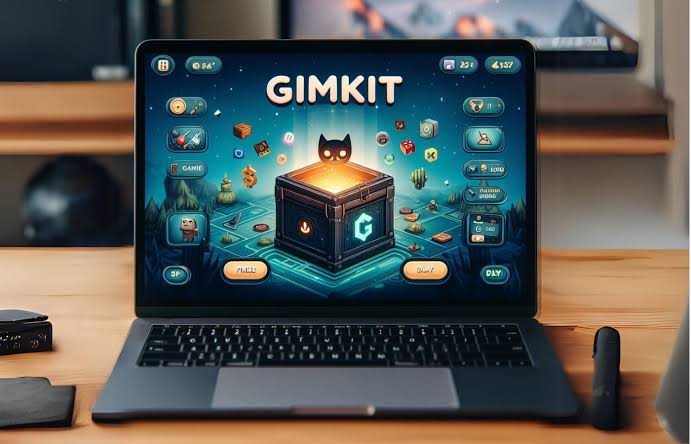How to Be a Successful Gimkit Host: A Complete Guide

In today’s tech-driven classrooms, engaging students in fun and interactive learning can be quite a challenge. That’s where Gimkit comes in—a unique quiz-style game that keeps students involved while learning at the same time. If you’re a teacher or an educator, becoming a Gimkit host allows you to create customized quizzes, making learning enjoyable and effective. But how exactly do you host a successful Gimkit session? In this blog, we’ll walk you through everything you need to know about being a great Gimkit host and keeping your students excited to participate.
What Is a Gimkit Host?
A Gimkit host is someone who runs a game session on Gimkit, typically a teacher or an educator. You get to create quizzes, monitor the game, and even adjust the rules as needed. Hosting allows you to guide the learning experience in real-time, making sure your students stay engaged and learn while having fun. Whether you’re using Gimkit in a classroom or a virtual learning environment, being a Gimkit host gives you full control over the game.
Why Should You Host Gimkit?
Being a Gimkit host offers plenty of benefits:
- Interactive Learning: Students are more likely to retain information when it’s presented in a fun and competitive format.
- Customizable Quizzes: You can create or choose quizzes tailored to your specific teaching material.
- Immediate Feedback: Students get instant results on their answers, helping them learn from mistakes in real-time.
- Flexible Gameplay: Adjust the game rules, time limits, and more to fit the needs of your classroom or learning setting.
Steps to Become a Successful Gimkit Host
1. Create a Gimkit Account
The first step to hosting a Gimkit session is to create an account. Gimkit offers free accounts with basic features, but for more advanced options and unlimited access, you might want to explore their premium plans. Simply visit Gimkit’s website, and sign up using your email or a Google account.
2. Set Up Your Game
Once logged in, you can either create a new kit (quiz) or use a pre-made one. Here’s how you can set up your game:
- Choose a Topic: Make sure the quiz aligns with your teaching material.
- Adjust Game Settings: You can change settings like how long the game will last or if students can earn power-ups during the session.
- Invite Students: Share the game code with your students, either through a virtual classroom platform or on a physical whiteboard.
3. Know the Game Modes
Gimkit offers a variety of game modes, each providing a different experience. Some of the popular modes include:
- Classic Mode: Students answer questions to earn “money” and compete for the top spot on the leaderboard.
- Team Mode: Students work in groups to pool their earnings and beat other teams.
- Trust No One (Imposter Mode): Similar to “Among Us,” this mode mixes learning with mystery, as one student secretly sabotages the others.
Knowing these modes will help you choose the one best suited for your students.
4. Monitor the Game in Real-Time
As the Gimkit host, you have the ability to monitor the game in real-time. You can see how each student is performing, which questions they are getting right or wrong, and even pause the game if needed. This allows you to step in and offer help or adjust the difficulty if necessary.
5. Keep the Energy Up
During the game, it’s important to keep the energy up. Encourage students, announce leaders on the scoreboard, and give shoutouts to students making progress. A little positive reinforcement can go a long way in making the experience more enjoyable.
6. Review and Reinforce Learning
After the game ends, take a few minutes to review the results with your students. This is a great opportunity to go over any tough questions and explain the correct answers. Gimkit also provides data on student performance, which can help guide your future lesson planning.
Tips for Hosting a Fun and Effective Gimkit Session
- Choose Engaging Topics: Pick topics that will spark your students’ interest, like popular culture or relevant current events, to keep them motivated.
- Use Power-Ups Wisely: Gimkit has various power-ups that students can purchase during the game. As the host, you can choose to enable or disable these power-ups based on the experience you want to create.
- Encourage Friendly Competition: While competition is fun, make sure to keep it friendly. Encourage students to help each other, especially when playing in team mode.
- Rotate Game Modes: To keep things fresh, switch up the game modes from time to time. This prevents the experience from becoming repetitive and keeps students excited to participate.
Common Mistakes to Avoid as a Gimkit Host
- Not Explaining the Rules Clearly: Before starting, make sure all students understand the rules of the game. Misunderstandings can lead to frustration.
- Ignoring Slow Internet Connections: In a virtual environment, some students may have slower internet connections, affecting their gameplay experience. Give extra time if needed.
- Forgetting to Engage: It’s easy to get caught up in monitoring the game, but don’t forget to actively engage with your students throughout the session.
Conclusion
Becoming a successful Gimkit host is all about making learning fun, engaging, and interactive. By understanding how the platform works, customizing it to your needs, and keeping the energy high, you can create an experience your students will look forward to. Remember, the key is not just to teach but to make learning enjoyable and rewarding.
FAQs About Hosting on Gimkit
1. How do I create a Gimkit quiz?
You can create a quiz by clicking on “Create Kit” on the Gimkit dashboard. Then, add your questions manually or import them from a spreadsheet.
2. Is Gimkit free to use?
Yes, Gimkit offers a free version with limited features. However, for full access and advanced features, there are paid plans available.
3. Can I play Gimkit with remote students?
Absolutely! Gimkit works perfectly in both in-person and virtual settings. Simply share the game code, and students can join from anywhere.
4. How long does a typical Gimkit game last?
Game length depends on the settings you choose. On average, most games last around 10-20 minutes.
5. Can I customize the game rules?
Yes, as the host, you have full control over the game settings. You can adjust time limits, enable or disable power-ups, and more.



